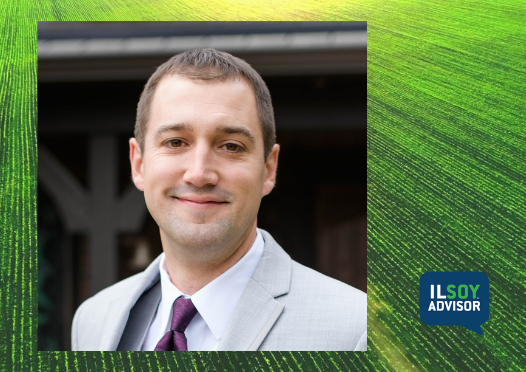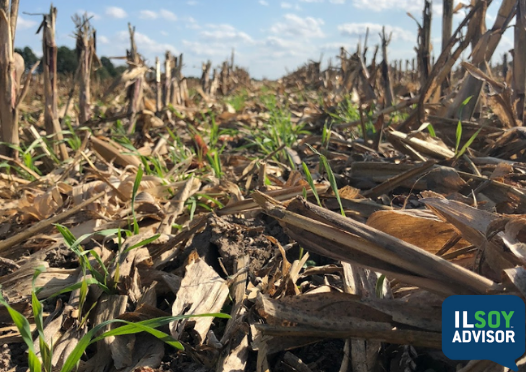ILSOYADVISOR POST
SHOWCASE FARMER: Thomas Kentner
The farmer. Tom Kentner and his son grow corn and soybeans on their 1,100-acre farm in Danville, Illinois. Kentner has more than 30 years of experience in the fertilizer business, and conservation has always been an interest of his.
“I’ve always been conscious of nutrient management, and I want to make an impact here,” he says. “Local Soil and Water Conservation District programs opened the door for me with programs to cost share cover crops. That’s how I started, and I haven’t stopped since.”
Environmental challenge. Kentner’s farm is located in the Lake Vermillion Watershed on the eastern side of Illinois. His number one goal is keeping nutrients out of the watershed and in the soil where the crop can use them.
“Healthy soil, healthy crop,” says Kentner. “Soil is very precious. We can’t make more. Once we lose top soil, we lose our optimum soil productivity.” That’s why Kentner has a heavy focus on reducing nutrient loss and preventing soil erosion.
Best management practices. For the past four years, Kentner has been growing cover crops on 50 percent of his farm. He plants his cover crops into standing corn in August or September, and this year he is planting mostly radishes.
In the fall, he strip tills in bean stubble, and in spring 2016, he’s planting no-till soybeans in 15-inch rows. Because he grows mainly radishes and turnips with a small amount of oats, Kentner isn’t concerned about burn down in the spring. He adds that he is looking to add rye into his cover crop rotation in the future.
“Each cover crop is a tool that can help you,” Kentner explains. “Cover crops scavenge nutrients left over from the crop, and they do a great deal of tillage for you. Overall, they improve your organic matter, too.”
Kentner’s cover crops are great at holding residue. Kentner says, “We had 6 to 7 inches of rain that led to flooding all around us. Where we planted radishes, residue stayed in the field. A lot of corn stalk and soybean reside flooded into the ditches where no cover crops were planted. It’s like an insurance policy—long term you know it helps, but in a bad year, it will save you.”
“We’re as conservationist as we can possibly get,” Kentner says, elaborating that he has tile in some areas and a lot of waterway work with surface drainage. He also practices nutrient management through soil testing every three to four years. Kentner carefully applies phosphorus and potassium, only as needed.
“We’ve bought farmland where people have not maintained the waterways. And by maintaining those, we’ve been able to clear the water.” Kentner adds, “We’re trying to make it better for the next generation.”
Advice to growers. “Determine what is best for you and your soil. When you see a practice you like, try it.” He adds that all practices should be tailored to your farm and your needs. “Commit to it; it takes five years to see changes.”
One thing for ’16. “This year, I hope to have cover crops on 100 percent of my farm.”





Comments
Add new comment